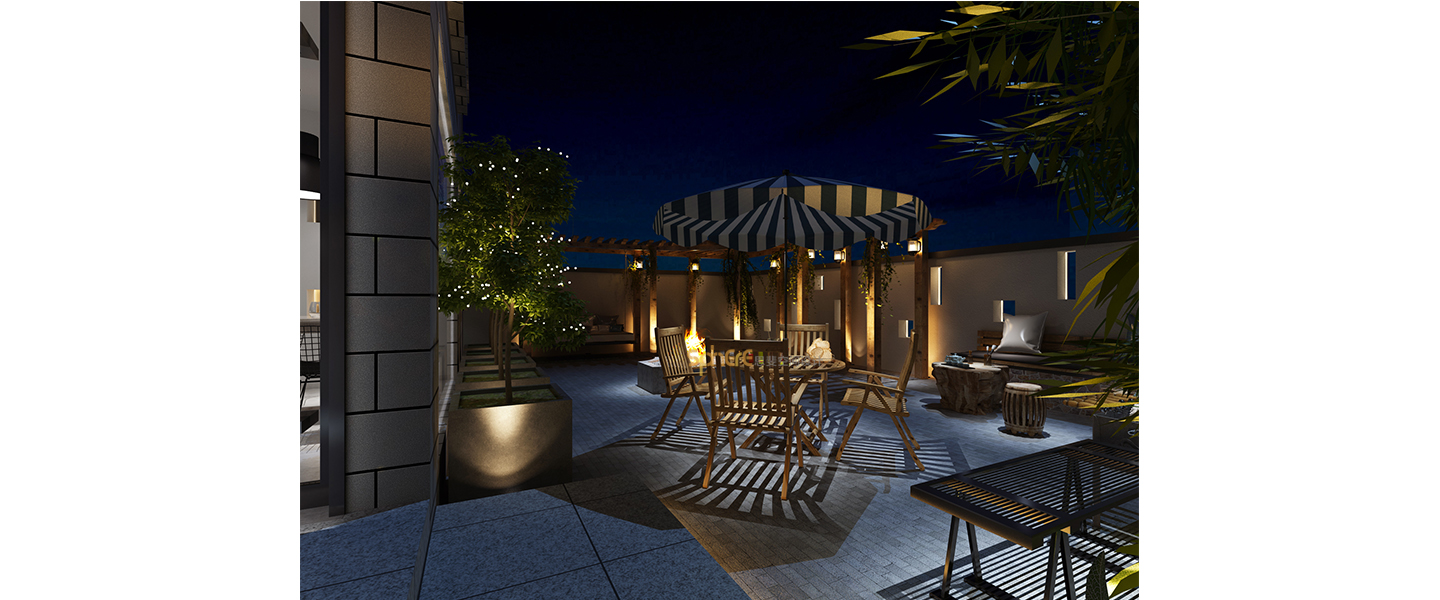Rose Museum NEXT architects
2017-07-10 22:00
架构师提供的文本描述。北京玫瑰博物馆是2016年世界玫瑰大会的主要会场,有三十多个国家参加。在这个占地100公顷的玫瑰园里,将展出超过2.000种玫瑰。
Text description provided by the architects. The Beijing Rose Museum is the main venue for the 2016 World Rose Convention, in which over thirty countries participate. In this 100 hectare rose park over 2.000 species of roses will be exhibited.
玫瑰和花卉在中国文化中根深蒂固,至少可以追溯到公元前11世纪。为了展示这段历史和玫瑰花文化,接下来的建筑师们设计了一座大型的新博物馆。博物馆被一个300米长,17米高的柔软不锈钢墙面所覆盖,上面有一个玫瑰花形的图案。这独立的皮肤创造了四个半开放的庭院之间的外观和主要博物馆建筑,在那里玫瑰图案创造了一个不断变化的灯光和阴影的游戏。这些开放空间被建筑所包围和包围的方式,强烈地让人想起了中国传统的四合院。到了晚上,这座建筑就会倒转:博物馆的外墙亮起来,在大楼外投射出鲜花的影子。
Roses and floriculture are deeply rooted in Chinese Culture, dating back at least to the 11th century B.C.. To showcase this history and the rose culture in general, NEXT architects designed a large-scale, new museum building. The museum is covered by a soft, stainless steel façade of 300 meter long, 17 meter high that is perforated by a rose-shaped pattern. This detached skin creates four half open courtyards between the façade and the main museum building, where the rose pattern creates an ever changing play of light and shadow. The way in which these open spaces are embraced and enclosed by the building, strongly reminds of the traditional Chinese walled-off courtyards. At night the building inverts itself: the museum façade lights up and projects shadows of flowers outside the building.
该设计在2014年的一次国际竞赛中被选中,因为它具有将传统和创新、内外空间结合起来的能力。古往今来,中国四合院是中国传统建筑和文化的缩影,是体现社会等级和人、屋、自然和谐相处的“理想典范”。在北京尤其如此,那里的庭院建筑模式建立在普通百姓住房的基础上,但也有更复杂的建筑,如寺庙和宫殿。庭院的封闭空间提供了隐私、保护,并标志着“内”和“外”之间的空间和意识形态界限。
The design was selected in an international competition in 2014 for its capacity to combine tradition and innovation, inner- and outer spaces. Throughout the ages, the Chinese walled-off courtyard epitomized traditional Chinese architecture and culture; it became the “ideal model” to embody social hierarchies as well as the harmony between man, house and nature. This is especially true in Beijing, where the courtyard architectural model stands at the basis of common people’s housing, but also more complex structures such as temples and palaces. The enclosed spaces of the courtyard offered privacy, protection, and marked the — spatial and ideological — boundary between “inside” and “outside.”
下一位建筑师为玫瑰博物馆的设计以这一主题为出发点,并通过创造一个新版本的中国历史庭院来发挥这些反对的作用。这一次,半透明的墙壁确实与周围的空间接触,与博物馆建筑的坚固心脏形成鲜明对比。Next建筑师事务所合伙人约翰·范德沃特(John Van De Water)表示:“玫瑰博物馆面临的主要挑战是,如何为一座深深植根于中国文化的建筑找到一种现代的中国身份。”
NEXT architect’s design for the Rose Museum takes this theme as its point of departure and plays with these oppositions by creating a new version of the historical Chinese courtyard. This time, the semi-transparent walls do engage with the surrounding space, in contrast to the solid heart of the museum building. John van de Water, partner at NEXT architects, tells that: “The main challenge with the Rose Museum was to find a modern Chinese identity for a building which significance is so deeply rooted into Chinese culture.”
Architects NEXT architects
Photographs Xiao Kaixiong
 举报
举报
别默默的看了,快登录帮我评论一下吧!:)
注册
登录
更多评论
相关文章
-

描边风设计中,最容易犯的8种问题分析
2018年走过了四分之一,LOGO设计趋势也清晰了LOGO设计
-

描边风设计中,最容易犯的8种问题分析
2018年走过了四分之一,LOGO设计趋势也清晰了LOGO设计
-

描边风设计中,最容易犯的8种问题分析
2018年走过了四分之一,LOGO设计趋势也清晰了LOGO设计
















































